Karlovac is a city with a rich history, picturesque landscape and which hides monuments and attractions for tourists who like to relax.
One of the main attractions of Karlovac is the famous castle from the 16th century. Walking on the majestic walls, you can admire panoramic views of the city and wonderful landscapes. This fortress is also a place where museums and exhibitions are located, presenting the history of Karlovac.
An important fact is that the city lies at the crossroads of four rivers – Kupa, Korana, Mreznica and Dobra – kayaking, rafting and fishing are available attractions that bring you closer to nature and fun. You can also visit the impressive waterfalls and cascades that decorate these rivers, or just relax on their peaceful banks.
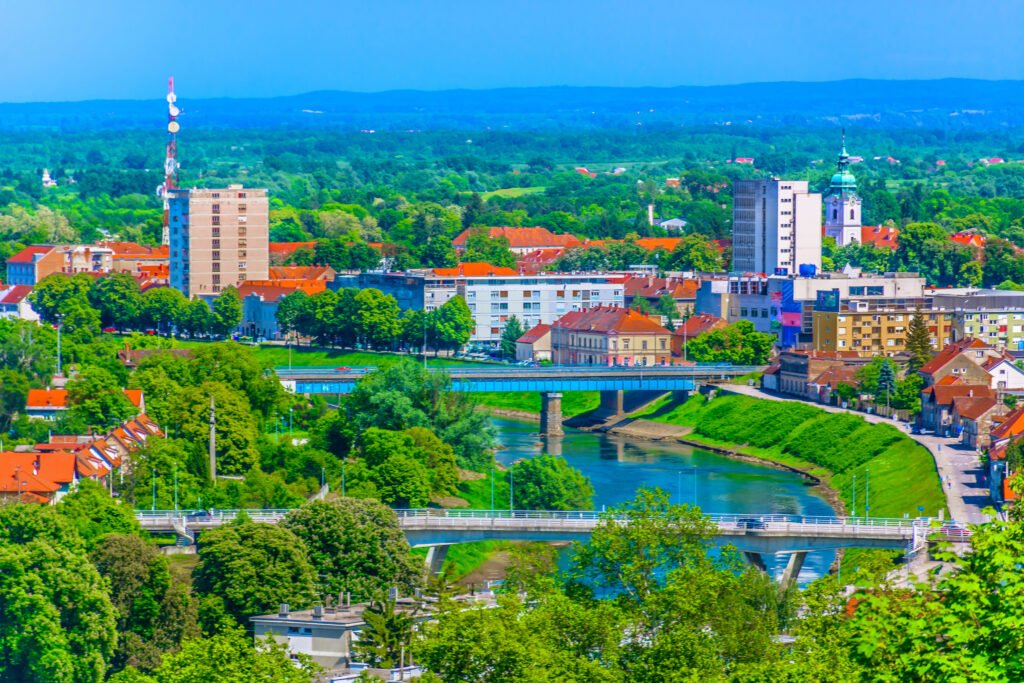
Monuments are scattered throughout the city. Worth visiting is the Church of St. Nicholas, a beautiful Baroque church from the 17th century, as well as the Church of the Holy Trinity, an impressive Gothic temple with intricate architectural details. The Old Town offers cobblestone streets and charming squares, and above all the atmosphere of old Karlovac.
Location
Karlovac it city in western Croatia. It lies southwest of Zagreb at the confluence of the Korana and Kupa rivers. Location of Karlovac is very favourable, being close to Slovenia, Bosnia and Herzegovina, Zagreb and Rijeka.
Foginovo Kupalište
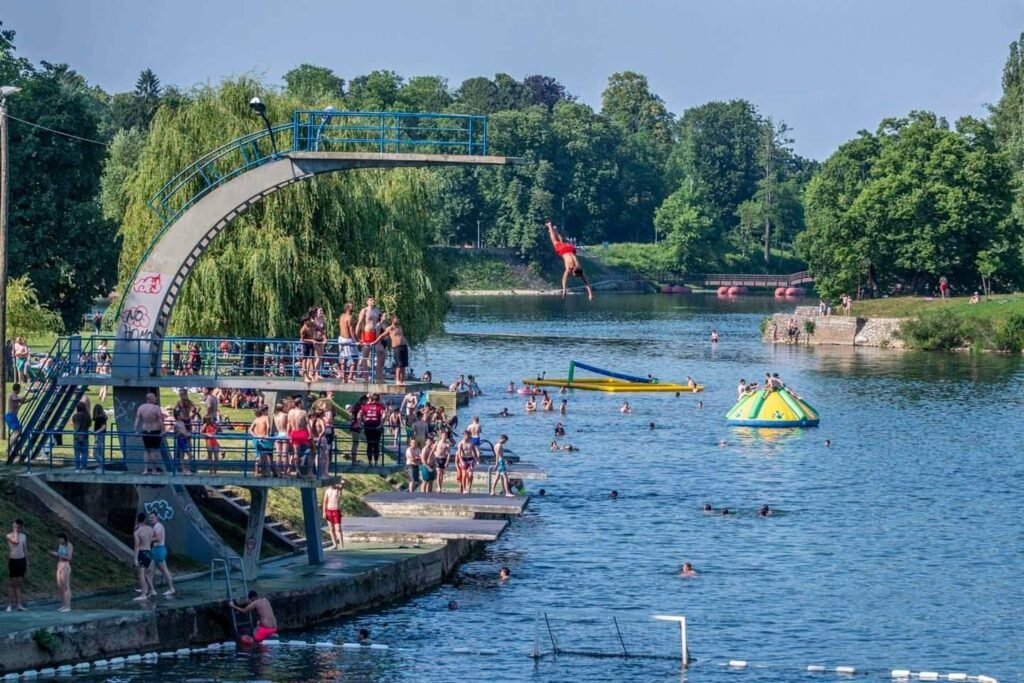
Fogin’s swimming pool on the Korana River in Karlovac is a favorite vacation spot for many Karlovac residents and visitors. From June to September, bathers enjoy the riverbanks and the popular waterfall. The quality of the beach equipment and numerous facilities rank it among the most modern beaches in Croatia.
The location offers a sandy beach, diving platforms and recreational facilities, making it a favorite place for swimming and sunbathing during the summer months. The area is surrounded by lush greenery, providing a picturesque backdrop for visitors.
Aquatika
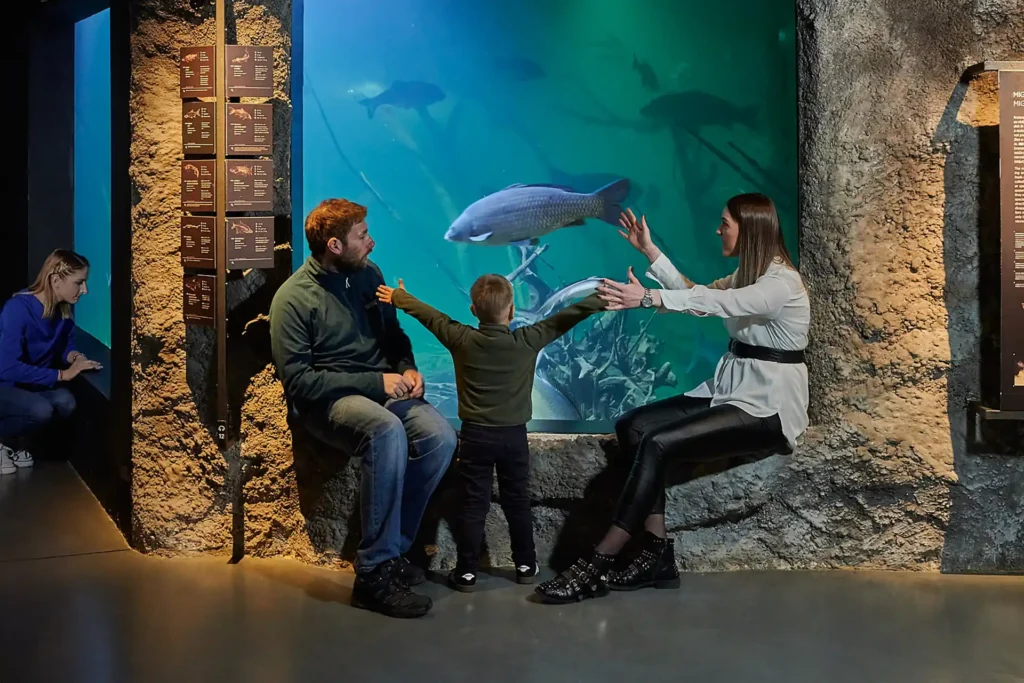
AQUATIKA is the public freshwater aquarium. The aquarium represents flora and fauna of Croatian rivers and lakes, geological past, and the history of the basin of four Karlovac rivers. The aquarium complex includes the library, souvenir shop, coffee shop, offices, and a conference room used also for the exhibitions.
Museum of the Homeland War Karlovac – Turanj
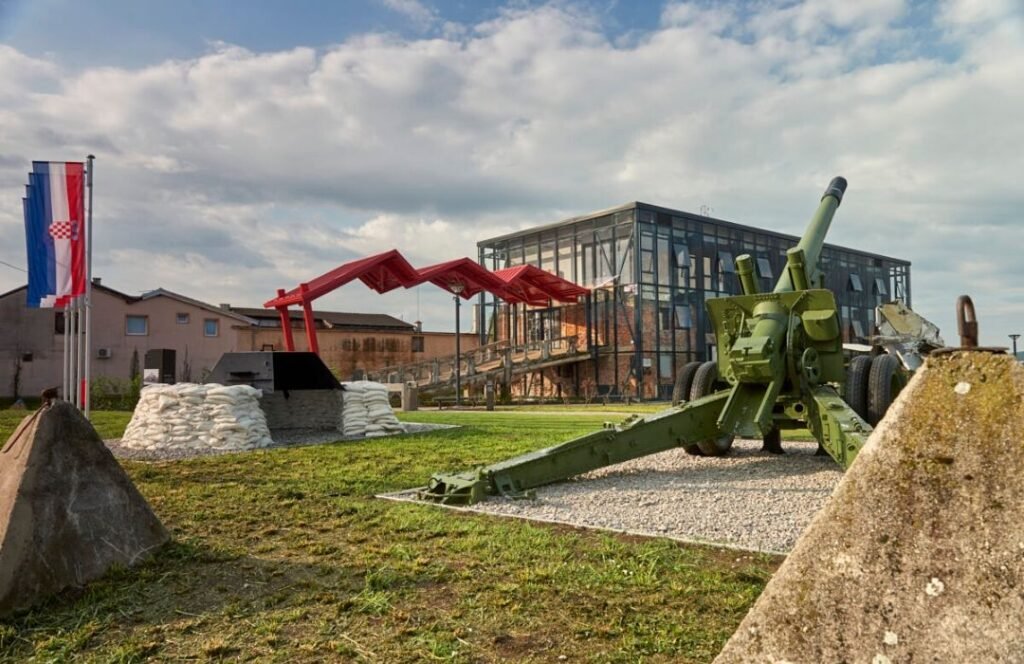
In an old Austrian barracks in the neighborhood of Turanj, 4 km from downtown Karlovac and along the Karlovac – Plitvice state road, the Karlovac City Museum has established the Museum of the Homeland War.
In the 1991-1995 Homeland War, Turanj was a strategically important point in the city’s defense, a place where the enemy was thwarted in its attempt to seize the city and divide Croatia. Today, Turanj is a symbol of victory, a witness to the struggle for free and independent Croatia and a permanent memorial to the heroes of the Croatian Army who had defended Karlovac and Croatia in Turanj.
The interior of the building on three floors is organized so as to provide for a coherent functioning of the museum contents. The building’s ground floor holds the Memorial Room of the Karlovac Defenders from the Homeland War, a souvenir shop and a cafe. The permanent exhibition Karlovac 1991 – 1995 is displayed on the first floor, while a multi-purpose hall, library with a reading room and offices are in the attic.
Muzej Domovinskog rata Karlovac – Turanj
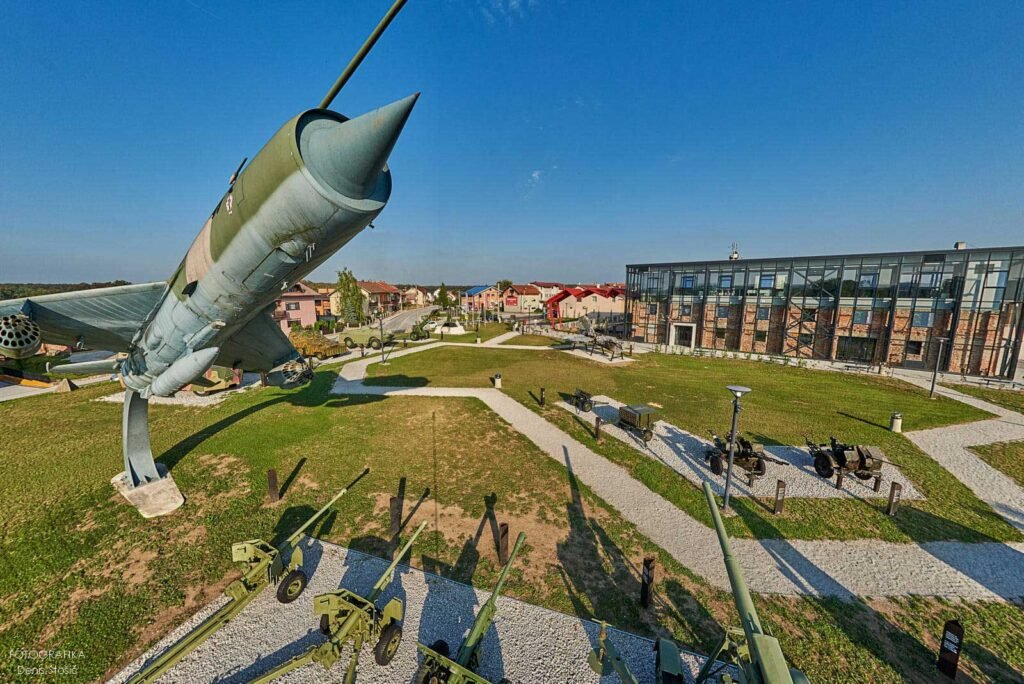
The Museum of the Homeland War is the result of a project by the Karlovac City Museum entitled “Reconstruction of the California Building and the Development of the Associated Environment within the Former Turanj Military Complex, Karlovac”.
The museum is located in the Križanić Turanj complex, which covers an area of 12,981 m² and includes buildings – valuable examples of Austrian military architecture. This continues the centuries-old continuity of the military purpose of the watchtower, which was built in 1582 on the right bank of the Korana River as an outpost of the Karlovac fortress – Zvijezda and the City of Karlovac.
Karlovac City Museum
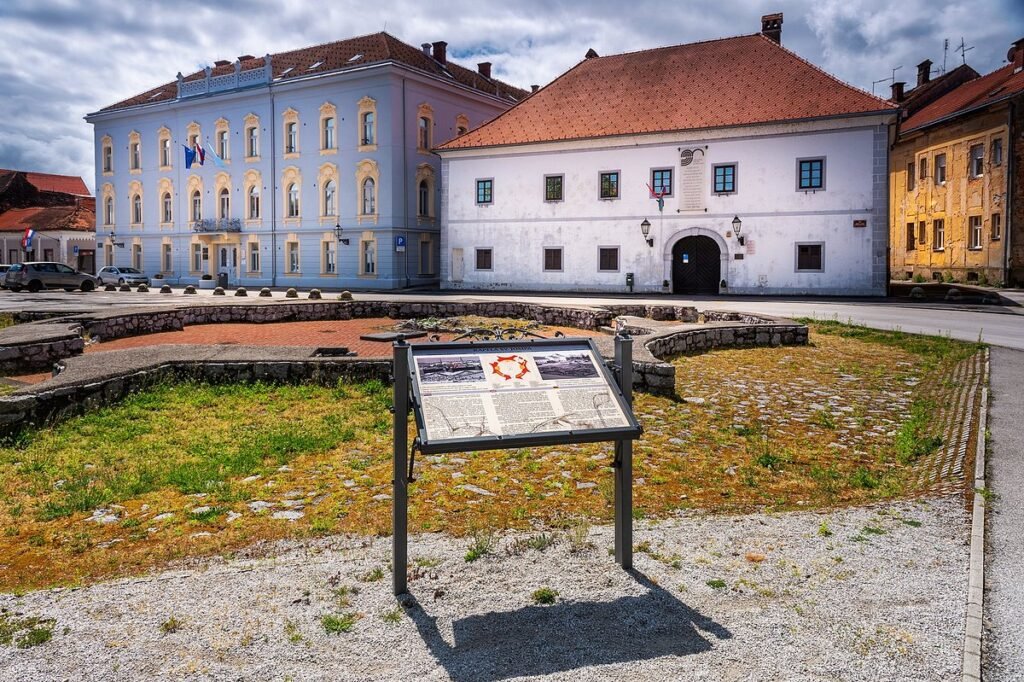
The museum is situated in the oldest Karlovac mansion, at the Strossmayer Square, a former Frankopan residence. The permanent exhibition of the archaeological department offers evidence of human activity in the Karlovac area, the historical department holds many objects, documents, and photographs, the cultural one presents interesting artifacts, from household objects to industrial heritage,
the ethnographical department houses the rural heritage and the brothers Seljan collection, the gallery has a rich collection of paintings, graphics and sculptures by Karlovac artists, the natural history department tests to the evolution of nature, while the contemporary history department is the latest addition to the museum.
Dubovac Castle
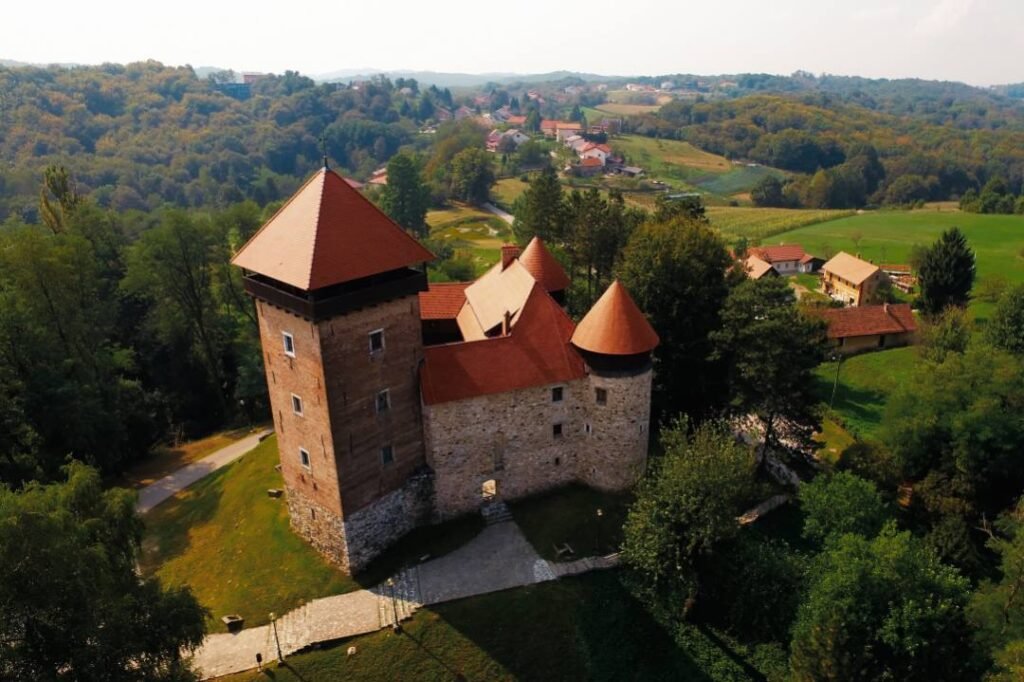
Karlovac Castle on a hill above the Kupa River is the most visible point of the cultural and historical landscape of Karlovac. Its square tower was probably built in the 13th century. In the 15th century, the castle was rebuilt in the Renaissance style.
This fortress, although not huge, is one of the best preserved examples of feudal architecture in Croatia. It has a permanent museum, located in the main tower, which tells its history, details about its significance and ownership. The castle is currently occupied by a restaurant, and also organizes concerts, parties, receptions and other cultural, social and musical events.
Church of St. Nicholas

The Church of St. Nicholas or Karlovac Cathedral, is a Serbian Orthodox church located in Karlovac, in central Croatia. The original church was finished in 1787, and was dedicated to Saint Nicholas. In 2007, the church was completely renovated.
Karlovac’s Josip ban Jelačić Square, flanked by two church towers, is a familiar postcard sight. The St. Nicholas Church at the central square of the Karlovac Old Town, opposite the Holy Trinity Church, is a part of the well-known town vista.
Holy Trinity Church
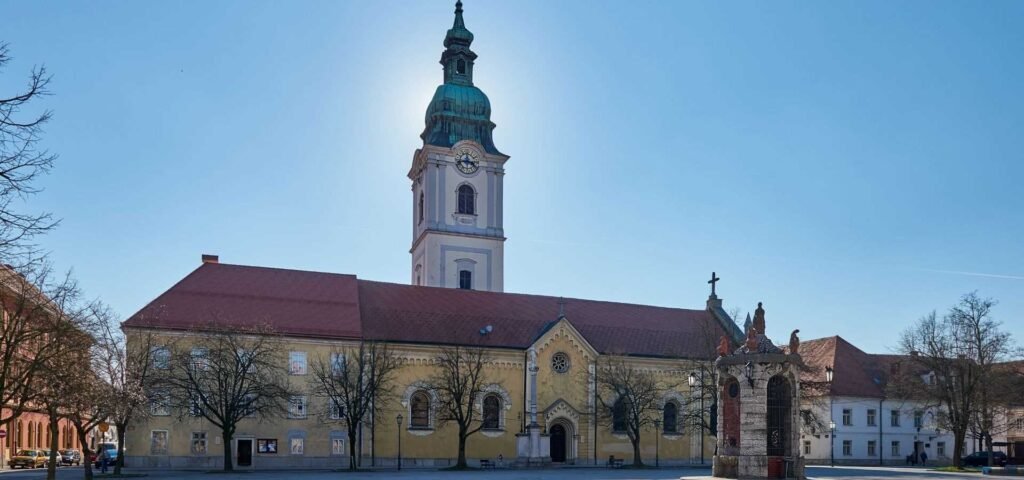
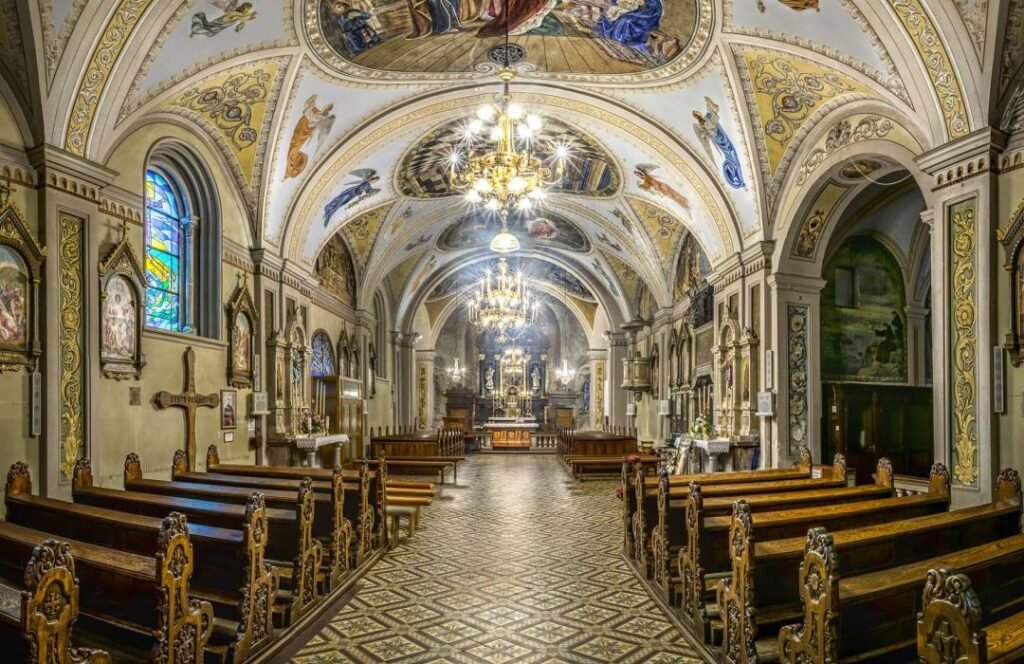
In the heart of Karlovac stands Holy Trinity Church, its Baroque belfry visible for miles around. This is part of the monastery complex where Franciscan monks lived and worked behind a walled courtyard and garden.
Today their spiritual, cultural and educational endeavours are illustrated by the rare books, artworks and religious artefacts that form the permanent collection of the monastery museum here. Visitors may also sample the monastic beer still brewed on site.
